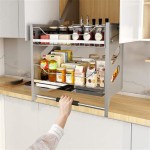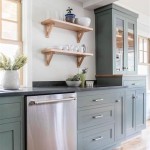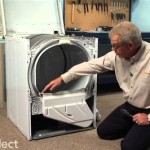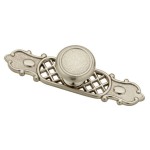Ready To Assemble Bathroom Cabinets and Vanities: A Comprehensive Guide
Ready-to-assemble (RTA) bathroom cabinets and vanities have become increasingly popular among homeowners and contractors alike. These products offer a cost-effective and adaptable solution for bathroom renovations and new constructions. Understanding the nuances of RTA cabinets and vanities, including their benefits, construction, assembly process, and selection criteria, is crucial for making informed decisions and achieving satisfactory results.
RTA cabinets and vanities are typically shipped flat-packed, requiring the buyer to assemble them. This distinguishes them from fully assembled or semi-custom cabinets, which are pre-built or partially constructed before delivery. The flat-pack design allows for efficient shipping and storage, contributing to lower overall costs. While assembly is required, the process is generally straightforward and can be accomplished with basic tools and a clear understanding of the instructions provided.
The availability of RTA bathroom cabinets and vanities has expanded significantly in recent years, with numerous manufacturers and retailers offering a wide variety of styles, finishes, and sizes. This abundance of choices allows consumers to find products that match their aesthetic preferences and functional needs. However, it also necessitates careful consideration of factors such as material quality, construction methods, and warranty coverage to ensure long-term durability and satisfaction.
Key Benefits of RTA Bathroom Cabinets and Vanities
RTA bathroom cabinets and vanities offer several distinct advantages that contribute to their widespread appeal. These benefits primarily revolve around cost savings, flexibility, and accessibility, making them a compelling option for budget-conscious homeowners and those seeking greater control over the renovation process.
One of the primary benefits is the cost savings. Because the cabinets are shipped unassembled, manufacturers can reduce shipping costs and storage space requirements. These savings are often passed on to the consumer, making RTA cabinets significantly more affordable than their fully assembled counterparts. This cost advantage can be particularly attractive for large-scale renovations or when outfitting multiple bathrooms.
Another key advantage is the flexibility RTA cabinets provide. Homeowners can purchase exactly the components they need and assemble them at their own pace. This is especially useful for phased renovations or projects with specific timelines. The flat-pack design also makes it easier to transport the cabinets to the installation site, particularly in situations where space is limited or access is difficult.
Furthermore, the ease of customization offered by some RTA cabinet providers allows for personalized designs. While the basic framework remains the same, options for door styles, finishes, hardware, and internal organizers can be selected to create a unique and functional bathroom space. This level of customization bridges the gap between stock cabinets and fully custom designs, offering a balance of affordability and personalization.
Understanding the Construction and Materials
The quality and longevity of RTA bathroom cabinets and vanities are heavily dependent on the materials used in their construction. Different materials offer varying degrees of durability, moisture resistance, and aesthetic appeal. Understanding the characteristics of these materials is essential for selecting products that will withstand the rigors of a bathroom environment.
A common material used in RTA cabinets is particleboard, often with a melamine or laminate finish. Particleboard is an engineered wood product made from wood chips and resin, pressed together to form a dense panel. While it is a cost-effective option, particleboard is susceptible to moisture damage and can warp or swell if exposed to water for extended periods. The melamine or laminate finish provides a protective layer and can be available in a variety of colors and patterns.
Another popular material is medium-density fiberboard (MDF). MDF is similar to particleboard but is made from finer wood fibers, resulting in a smoother and more durable surface. MDF is less prone to moisture damage than particleboard but is still not entirely waterproof. It is often used for cabinet doors and drawer fronts, as it provides a stable and consistent surface for painting or applying veneers.
Plywood is considered a higher-quality material for cabinet construction. Plywood is made from layers of wood veneer glued together, providing greater strength and stability than particleboard or MDF. It is also more resistant to moisture damage, making it a suitable choice for bathroom cabinets. Look for plywood cabinets with a durable finish or sealant to further protect them from water exposure.
Solid wood is the most premium material option for bathroom cabinets. Solid wood cabinets offer exceptional durability and aesthetic appeal. They are also more resistant to moisture damage than engineered wood products, although it is still important to properly seal and maintain them. Solid wood cabinets tend to be more expensive than other options but can provide a long-lasting and beautiful addition to a bathroom.
In addition to the cabinet box, the hardware used in RTA cabinets is also an important consideration. Hinges, drawer slides, and door pulls should be made from durable materials like steel or brass to ensure smooth operation and long-term reliability. Soft-close hinges and drawer slides are a popular upgrade that can enhance the user experience and prevent slamming.
Assembly Tips and Considerations
Assembling RTA bathroom cabinets and vanities is generally a straightforward process, but careful attention to detail is essential for achieving a professional-looking result. Before beginning the assembly process, it is crucial to thoroughly review the instructions provided by the manufacturer and ensure that all necessary tools and components are present.
The tools typically required for assembling RTA cabinets include a screwdriver (both Phillips and flathead), a power drill, a rubber mallet, a level, and a measuring tape. A square is also helpful for ensuring that the cabinet corners are aligned correctly. While a power drill can speed up the assembly process, it is important to use it carefully to avoid stripping the screws or damaging the cabinet panels.
Before starting the assembly, it is advisable to lay out all the cabinet components on a clean and protected surface. This will make it easier to identify the individual pieces and ensure that nothing is missing. Refer to the instructions to understand the proper orientation and placement of each component.
When assembling the cabinet box, pay close attention to the alignment of the panels and ensure that they are properly secured with screws or fasteners. Use a level to check that the cabinet is square and plumb. If necessary, use a rubber mallet to gently tap the panels into place.
Installing drawers and doors requires careful attention to detail. Ensure that the drawer slides are properly aligned and that the drawers operate smoothly. Adjust the door hinges as needed to ensure that the doors are properly aligned and close securely. Install door pulls and knobs according to the manufacturer's instructions.
After the cabinet is assembled, inspect it carefully for any imperfections or loose fasteners. Tighten any screws or fasteners that may have worked loose during the assembly process. Clean the cabinet with a damp cloth and a mild detergent to remove any dust or debris.
Proper installation of the assembled cabinet is also crucial for its long-term stability and functionality. Ensure that the cabinet is securely attached to the wall studs using appropriate fasteners. Use shims to level the cabinet if necessary. Connect the plumbing and electrical fixtures according to local codes and regulations.
Finally, always consult with a qualified professional if you are unsure about any aspect of the assembly or installation process. A skilled carpenter or plumber can provide valuable assistance and ensure that the cabinets are installed correctly and safely.
In conclusion, RTA bathroom cabinets and vanities represent a versatile and cost-effective solution for bathroom renovations and new constructions. By understanding the benefits, construction materials, and assembly process, homeowners can make informed decisions and achieve a functional and aesthetically pleasing bathroom space.

Ready To Assemble Bathroom Vanities Rta Cabinet Supply

Brilliant White Shaker Ready To Assemble Bathroom Vanities Cabinets

Heather Grey Shaker Ready To Assemble Bathroom Vanities Cabinets

Aspen White Shaker Ready To Assemble Bathroom Vanities Cabinets

Best Bathroom Vanity Cabinets Cabinet Set

Providence White Ready To Assemble Bathroom Vanities Cabinets

Bathroom Vanity Cabinets Shop Online Rta Cabinet Supply

Homlux Easy Diy 30 In W X 21 D 34 5 H Ready To Assemble Bath Vanity Cabinet Without Top Shaker White Hd Vs30 Sw 8 The Home

Homlux 2 Drawer 48 In W X 21 D 34 5 H Ready To Assemble Bath Vanity Cabinet Without Top Raised Panel White Hd Vsd48 Tw 8 The Home

Graphite Grey Shaker Ready To Assemble Bathroom Vanities Cabinets
See Also








